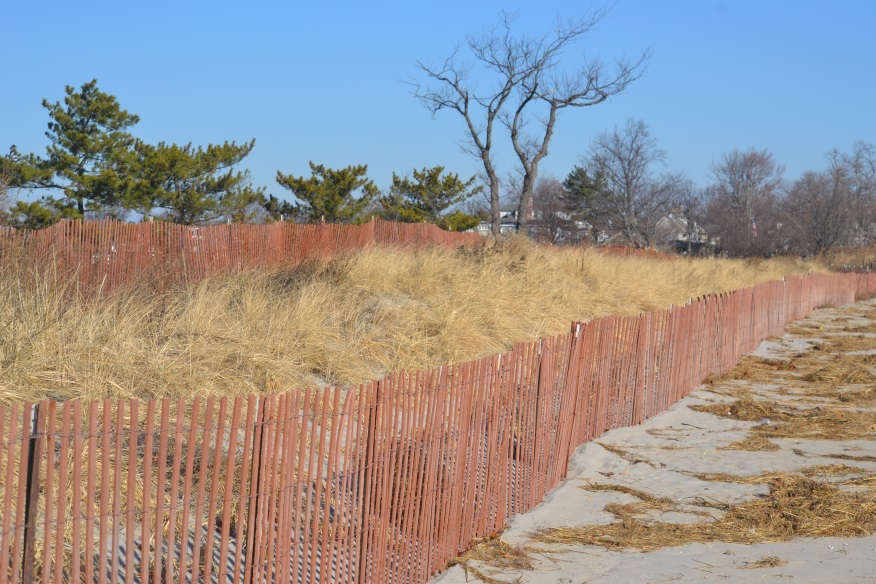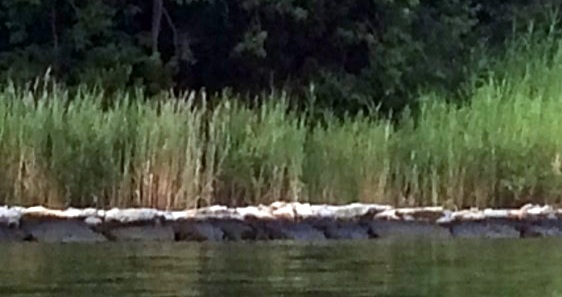|
|
Marsh
|
Beach
|
Bluff
|
Pros
|
Cons
|
Approach
|
Construction Cost
|
Maintenance Cost
|
|
NON-STRUCTURAL
|
|
|
|
|
|
|
|
|
|
Bank
Grading and planting
|
|
|
|
· Does not disturb existing
habitat
· Stabilizes slope
· Shoreline access
|
· Limited to low wave energy
sites
· May take time for
vegetation to become established
· Reduction of uplands
· Susceptible to surface
runoff and groundwater seepage
|
Very
soft
|
Low
|
Very
low
|
|
Marsh Restoration
|
|
|
|
· Even narrow fringe marsh
provides protection from waves
· Easy to construct
|
· Limited to low wave energy
sites
· May take time for
vegetation to become established
· Does not protect from storm
surge
|
Very soft
|
Low
|
Very low
|
|
Beach
Nourishment
|
|
|
|
· Recreational opportunities
· Provides habitat for
shorebirds and other coastal species
· Shore access
|
· May disturb nearshore
habitats
· Renourishment may be
necessary following storm damage
· Requires periodic
renourishment
|
Very
soft
|
Medium
|
Medium
|
|
Dune
Creation
|
|
|
|
· Protection from waves and
winds
· Provides habitat for
shorebirds and other coastal species
· Dune planting is easy
|
· Needs sufficient dry beach
to form dunes
· Easily damaged by foot
traffic
· Available sediment necessary
for growth
|
Very soft
|
Low
|
Very low
|
|
HYBRID
|
|
|
|
|
|
|
|
|
|
Fiber
Logs
|
|
l
|
|
· Flexible and can adapt to
shoreline
· Does not disturb existing
habitat
· Biodegradable
· Shoreline access
|
· Easily damaged by debris
and ice
· Limited to low wave energy
sites
|
Very soft
|
Low
|
Very Low
|
|
Marsh
Toe Revetment
|
|
|
|
· Can sustain damage without
affecting structural integrity
· Construction
straightforward
· Easy to repair
· Easy to adapt or modify
· Can withstand relatively
strong currents and low-moderate waves.
· Interstitial spaces provide
aquatic habitat
|
· Heavy equipment necessary
for construction
· Scouring and flanking can occur
· May cause increased
downdrift erosion
· Unstable rocks can be a
hazard
· Limits coastal access
|
Hard
|
Very
high
|
Low
|
|
Marsh
Sills
|
|
|
|
· Shoreline retains many of
its natural characteristics.
· Interstitial spaces provide
aquatic habitat
· Creates or enhances marsh
habitat
· Easily adapted to site
conditions
· Shoreline access
|
· Can cause erosion on
seaward edge
· Scouring and flanking can occur
· May cause increased
downdrift erosion
· Susceptible to damage by
ice and/or debris.
· Can be navigation hazard.
· Typically limited to sites
with small-moderate tidal range
· Heavy equipment may be necessary
for construction
|
Soft
|
Very low
|
Medium
|
|
Oyster
Reefs
|
|
|
|
· Provide important habitat
functions.
· Can improve water quality
by filtering out pollutants
· Shoreline access
|
· Susceptible to damage by
debris and/or ice.
· Extremely sensitive to
changes in water quality
· Regulatory requirements can
be strict.
|
Soft
|
Low
|
Medium
|
|
Breakwaters
|
|
|
|
· Suitable for high wave
energy
· Remain effective with minor
damage
· May create aquatic habitat
|
· Susceptible to settling,
scour and flanking.
· May pose navigation hazard
· Large offshore structural
footprint may disturb existing habitat
· Heavy equipment necessary
for construction
|
Hard
|
Very high
|
Very high
|
|
Wave Attenuation Device
|
|
|
|
· Suitable for high wave
energy
· Remain effective with minor
damage
· May create aquatic habitat
|
· Susceptible to settling
· May pose navigation hazard
· Susceptible to damage by
debris and/or ice.
· Large offshore structural
footprint may disturb existing habitat
· Heavy equipment necessary
for construction
|
Hard
|
High
|
Medium
|




